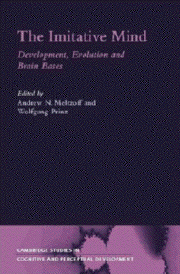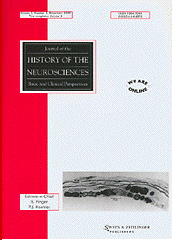La présence éventuelle d'une publicité ci-dessus est insérée par le routeur du mailing-liste indépendamment de mes choix en compensation de la gratuité de son service Dr O Walusinski baillement.com baillement.info yawning.info 

mardi 1er avril 2003 la lettre d'information du site baillement.com N°18 Si vous ne voyez pas les images, cliquez ici pour lire cette lettre dans votre navigateur. If you cannot see any pictures below, try viewing this letter via your web browser click here baillement.com est libre d'accès, base documentaire pour comprendre, chercher, travailler
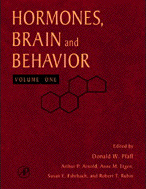
Hormonal and genetic influences on arousal sexual and otherwise Donald Pfaff, Jonathan Frohlich Trends in Neurosciences Vol.25 No.1 January 2002 Precision in mouse behavior genetics Donald Pfaff PNAS 2001; vol. 98; n°11; p5957-60 Sex hormone influences on yawning behavior Holmgren R, Holmgren Urba R, Aguira M, Rodriguez R Acta Neurobiol Exp 1980; 40; p515-519 Behavioral effects of an antiandrogen in adult male rhesus Macaques Deputte BL et al Hormones and Behavior 1994; 28; 155-164 Storage and display of odour by male Chiroptera Voigt CC, von Helversen 0 Behav Ecol Sociobiol 1999; 47; 29-40 The influence of age, sex, rank on yawning behavior in two species of macaques Troisi A, Aureli F et al Ethology 1990; 86; 303-310 Threshold for behavioral response to testosterone in old castrated Male Rhesus Macaques Phoenix CH, Kathleen C Biology of Reproduction 1986; 35, 918-926 Androgenic influences on apomorphine-induced yawning in rats HG Berendsen Behavioral & Neural Biology 1981; 33; 123-128 Opiate-androgen interactions in drug-induced yawning and penile erections in the rats HG Berendsen, AJ Gower Neuroendocrinology 1986; 42; 185-190 Testosterone potentiation of the effectiveness of ACTH on the induction of the strech-yawning syndrome in male Guinea Pigs J Rodriguez-Sierra Hormones and Behavior 1981; 15; p77-85 Apomorphine facilitates male sexual behavior of Rhesus Monkeys SM. Pomerantz Pharmacol Biochem Behavior 1990; Vol. 35; pp 659-664 Apomorphine and Oxytocin induced penile erection and yawning in intact and castrated male rats : effect of sexual steroids MR Melis, A Argiolas et al Neuroendocrinology 1994;59; 349-354 Genomic and non-genomic effects of steroïds on neuronal activity McEwen BS Trends Pharmacol Sci 1991; 12:141-147 Lamarckian mechanisms in Darwinian evolution Jablonka E et al Trends Ecol Evol 1998; vol 13; t 5; p206-210 Brain and Sexual Behavior K Larsson S Ahlenius Annals of the New York Academy of Sciences 1999; 877; 292-308 Early membrane estrogenic effects required for full expression of slower genomic actions in a nerve cell line N Vasudevan, LM Kow, DW. Pfaff PNAS 2001; vol. 98; n 21; p 12267-12271 Neuropeptides and sexual behaviour A Argiolas Neuroscience and Behavioral Reviews 1999; 23; 8; 1127-1142 Sexual behavior in adult gonadectomized female pseudohermaphrodite, female, and male Rhesus Macaques treated with estradiol benzoate and testosterone propionate CH Phoenix, KC Chambers Journal of Comparative and Physiological Psychology 1982, v 96, n 5; p823-833 Gonadal hormones and behavior of normal and pseudohermaphroditic nonhuman female primates RW Goy and JA Resko Rec. Progr. Horm. Res 1972; 28; 707-733
« It is ironic that testosterone "the male sex hormone," is more closely associated with the yawning rate than with the mounting or intromitting rates » Charles Phoenixbâillement de chauve-souris Chiroptera's yawn
Sexual steroids exert several effects on both central dopaminergic and oxytocinergic systems by acting either at the genomic or membrane level Hormones, genes and the structure of sexual arousal - The actions of sex steroids in the brain have been shown, from molecular to systems levels, to control reproductive behaviour in a wide range of vertebrates. It has become increasingly clear that gonadal steroid hormones have regulatory functions which extend far beyond the direct coordination of an animal's physiological state and its display of sexual behaviour. While some of these actions may include changes in mood or other behavioural measures (place of yawn), such as exploration or excitability, sex steroid hormones also influence neural plasticity, neuronal activity and, possibly, learning and memory, as reflected by long-term potentiation or age-related deficits.
- Despite the inherent difficulty of connecting individual genes with integrated mammalian behaviors, it has been determined that a series of genes are turned on by sexual hormones acting in forebrain. Their products are, in turn, facilitatory for reproductive behaviors such as lordosis, grooming, yawning, mating. The ability of nongenomic modes of steroïd hormone action to potentiate nuclear transcriptional effects provides a unified view of estrogen and testosterone action and has potential physiological relevance.
- For example, yawning behavior has been chosen as a behavioral indicator of androgen activity as its frequency has been shown to decrease when adult males are castrated and increase again after substitutive injections of testosterone. Yawning may also represent a visual as well as an olfactory cue (chiroptera)
- Understanding how hormonal and genetic effects on deep motivational and arousal processes contribute to their effects on specific sexual and aggressive behaviors pose significant challenges for functional genomics and nongenomics actions.
- ("Genes, neurons and brain regions are annotated with functional descriptors that fail to capture the interactive nature of these units. Narrow definitions fail to capture the breadth of a function; more encompassing definitions are lost among the numerous variables of a transcriptional profile, or are elusive when attempting to generalize the role of a specific brain region." Beyond phrenology, at last. Kenneth S. Kosik Nature Reviews Neuroscience march 2003; vol 4; n 3)
- In resume : In animals that show parental care and other forms of social interaction, patterns of behaviour can be transferred between individuals and across generations. New patterns of behaviour, first acquired either by accident or by individual learning in new conditions, can be transmitted transgenerationally through social learning. This inheritance system operates at the whole organism level, and the information encoded is analog in nature - as a rule, it is not readily dissociated into independently heritable parts, but is contained in the dynamics of the interactions between the organism and its social and ecological environment.
Hormones, gènes et bases du comportement sexuel - La sexualité ne peut s'accomplir qu'en fonction de niveaux de vigilance (place du bâillement), de désir et d'agressivité adaptés.
- Les effets des stéroïdes sexuels au niveau du cerveau démontrent, tant au niveau moléculaire que comportemental, qu'ils contrôlent la reproduction dans tous ses aspects chez la plupart des vertébrés. Il est clair que les hormones sexuelles, bien au delà de la simple fonction gonadique, étendent leurs effets aux différents comportements et actions nécessaires au choix du partenaire et aux conditions de l'accouplement : odeurs, hyperlordoses, toilettages, bâillements... (sans négliger l'immunité, puisque la testostérone limite le risque d'auto-immunité).
- Le bâillement a été choisi comme indicateur d'activité androgènique. En effet, sa fréquence décroît chez le mâle castré (rat, souris, primates non humains), réapparaît par substitution injectable de testostérone, est aussi fréquent chez une femelle traitée par testostérone dès la naissance que chez le mâle. Il apparaît chez l'hermaphrodite traité par testostérone.
- Dans certaines espèces, le bâillement a aussi comme fonction de diffuser des odeurs liées à la sexualité: voir le bâillement de la chauve souris.
- Malgré la difficulté à relier un gène et un comportement précis chez les mammifères, il a été démontré qu'une série de gènes intervient dans l'expression de l'action des hormones sexuelles au niveau cérébral. La capacité nongénomique qu'ont les oestrogènes et la testostérone à provoquer une transcription nucléaire permet d'entrevoir une synthèse cohérente de leurs effets physiologiques. Nota bene : Les stéroïdes présentent un mécanisme d'action différent des autres principales hormones, du fait de leur structure. Ainsi, certaines hormones, comme l'ocytocine, sont des protéines et, comme telles, ne peuvent franchir la bicouche lipidique formant la membrane des cellules. En conséquence, ces hormones agissent sur des récepteurs membranaires situés à l'extérieur de la cellule. Au contraire, les hormones stéroïdiennes sont des lipides et franchissent facilement les membranes. Elles agissent au niveau de récepteurs intracytoplasmiques, ce qui leur donne un accès direct au noyau et à la régulation de l'expression génique. Des différences dans la concentration de ces récepteurs au niveau de diverses régions cérébrales sont responsables de l'action différentielle de ces hormones.
- Les hormones sexuelles influencent la plasticité neuronale, l'activité neuronale dans son ensemble y compris la mémoire et le vieillissement cérébral, en intervenant comme modulateurs au niveau des récepteurs des neuromédiateurs. Comprendre comment ces effets hormonaux, expression de la génétique, modulent la stimulation sexuelle et créent le désir reproductif, posent encore de redoutables défis à l'explication génomique et non génomiques des comportements.
- La recherche actuelle se développe, par exemple, en étudiant Caenorhabditis elegans : Bridging the gap between genes and behavior: recent advances in the electrophysiological analysis of neural function in Caenorhabditis elegans Michael M. Francis, Jerry E. Mellem and Andres Villu Maricq
- Trends in Neurosciences 2003;26(2)
- Lire aussi: Lamarckian mechanisms in Darwinian evolution
- Smelling of odorous sex hormone-like compounds causes sex-differentiated hypothalamic activations in humans Ivanka Savic Neuron 2001; 31; 661-668
- The anatomical pathways for processing of odorous stimuli include the olfactory nerve projection to the olfactory bulb, the trigeminal nerve projection to somatosensory and insular cortex, and the projection from the accessory olfactory bulb to the hypothalamus.
- In the majority of tetrapods, the sex-specific effects of pheromones on reproductive behavior is mediated via the hypothalamic projection. However, the existence of this projection in humans has been regarded as improbable because humans lack a discernable accessory olfactory bulb.
- Here, we show that women smelling an androgen-like compound activate the hypothalamus, with the center of gravity in the preoptic and ventromedial nuclei. Men, in contrast, activate the hypothalamus (center of gravity in paraventricular and dorsomedial nuclei) when smelling an estrogen-like substance. This sex-dissociated hypothalamic activation suggests a potential physiological substrate for a sex-differentiated behavioral response in humans.
- Alors que la majorité des tétrapodes présente un bulbe olfactif proéminent qui joue un rôle crucial dans la sexualité en permettant la perception des phérormones, il n'avait jamais pu être mis en évidence de telles données chez l'Homme. Est-ce là une piste de recherche afin d'élucider la disparition de l'hormono-dépendance du bâillement chez l'homme ? Le travail de Ivanka Savic montre que la femme perçoit des composants dérivés d'hormones mâles et l'homme des dérivés d'oestrogènes, qui activent l'hypothalamus (noyau paraventriculaire, celui impliqué dans le bâillement, et dorsomédian). Cette dissociation d'activation entre les sexes suggère une réponse comportementale assez comparable pour l'Homme et les autres animaux.
- Effects of ageing on the behavioural responses to dopamine agonists: decreased yawning and locomotion, but increased stereotypy Stoessl AJ and all Brain Research 1989; 495; 20-30
- The endocrinology of aging and the BrainArch Neurol nov 2002; vol 59
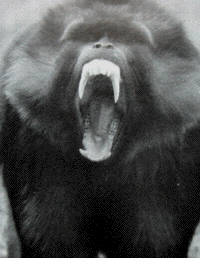 mâle alpha
mâle alpha pseudo-hermaphrodite
pseudo-hermaphroditeChanges in multiple brain regions underlie species differences in a complex, congenital behavior E Balaban Proc. Natl. Acad. Sci. USAMarch 1997; Vol. 94, p 2001-2006
Ocular complications of acoustic neuroma surgeryMG Mulhern and all Br J Ophthalmol 1999; 83; 1392 1389
-
An acoustic neuroma is a benign tumour derived from the Schwann cells of the vestibulocochlear nerve sheath. The ophthalmic sequelae of tumour resection can ultimately lead to any ophthalmic symptoms after acoustic neuroma resection. At the research review, the following symptoms were reported: dryness (33.4%), crocodile tears (7%), epiphora (5.3%), poor acuity (3.5%), reduced visual field secondary to brow ptosis (1.7%) and secondary to tarsorrhaphy (1.7%), aberrant regeneration induced lid closure on yawning (1.7%), and miscellaneous (12.3%). - Le neurinome de l'acoustique est une tumeur bénigne de la VIII° paire crânienne développée aux dépens des cellules de Schwann. Les séquelles ophtalmiques résultant de sa chirurgie d'exérèse ont été revues par MG Mulhern. Parmi celles-ci, la régénération de fibres aberrantes du VII peut induire une occlusion involontaire de la paupière supérieure lors des bâillements.
Water-soluble antioxidants in human tears: effect of the collection method Choy CK, Cho P, Chung WY, Benzie IF Invest Ophthalmol Vis Sci 2001 Dec;42(13):3130-4 
Variability of tear protein levels in normal young adults: between-day variation. Ng V, Cho P, Mak S, Lee A Graefes Arch Clin Exp Ophthalmol 2000 Nov 238:892-9
-
Tear fluid protects the external surface of the eye. Tears can be described as of two types: reflex tears, which are induced by a stimulus such as yawning, irritation, or bright light, and basal tears, which are the nonstimulated secretion of the tear glands. The major function of tears is to maintain corneal health by diluting, flushing out, or neutralizing foreign bodies and chemicals and reactive oxygen species (ROS). Owing to its exposed nature, the corneal surface is at particular risk of oxidative damage by photo-induced and environmental ROS. Antioxidants in tears act to oppose such damage (cysteine, glutathione, urate, and tyrosine and dietary ascorbate). - Vascular fragility and cell injury or transfer caused by the Schirmer strip affect tear composition and result in spuriously high antioxidant levels in tears. The use of a capillary tube for tear collection is much less invasive, and is suggested as the method of choice for reflex tear collection, induced by yawning for example, for biochemical studies.
- Le fluide lacrymal protège la surface externe de l'oeil. Deux types de larmes peuvent être décrits: les larmes réflexes, telles celles apparaissant lors de bâillements, d'irritations, d'expositions photiques trop intense et le film lacrymal de base, permanent, qui ne résulte pas d'une stimulation des glandes lacrymales. La fonction première des larmes est de maintenir en état physiologique la cornée, en diluant, évacuant, neutralisant tout corps étranger, tout irritant chimique en particulier les oxydants. De part sa position particulièrement exposée, la cornée court un gros risque de stress oxydatif, soit d'origine photique soit par agression environnementale oxydative. La présence de molécules anti-oxydantes dans les larmes concourt à éviter les conséquences dommageables de cet état (cystéine, glutathion, urate, tyrosine et acide ascorbique).
- La fragilité capillaire conjonctivale, et les lésions cellulaires de l'épithélium cornéen provoquées par la méthode de recueil lacrymal de Schirmer perturbent la fiabilité des mesures de présences de ces antioxydants dans le film lacrymal. Ce travail montre que l'usage de tubes de recueil par capillarité des larmes, dont la sécrétion peut au besoin être stimulée par le bâillement, optimise la fiabilité de ces mesures pour les études biochimiques.
CPAP and YawningPosted by R...T... on October 30, 2002 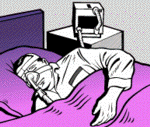
Réapparition du bâillement chez un patient traité pour apnées du sommeil! un nouveau critère de récupération?
-
Basic fact, yawning is an indication that you are tired.So, why yawning now? Because of the constant awakenings as a result of sleep apnea, we become tired, then fatigued, then more fatigued, then a zombie ..... It seems somewhere along the line some of us at least go beyond the normal reaction to lack of sleep and fail to exhibit the normal reactions. One of the many things I quit experiencing with sleep apnea was an occasional yawn.
When we start CPAP therapy, we first catch up on severely delinquent REM sleep (experiencing what is called REM rebound). We then get back into a normal sleep mode with normal sleep architecture and normal circadian rhythms. If we get more than the normal for adults 8+ hours per day of sleep, we begin to pay back our sleep debts.
During this period of time we start to experience minor little changes in our lives. Simple things like not falling asleep behind the wheel. Seeing the end of movies. Making it through the kids (or grand kids) school program. Or yawning. My co-workers thought I was nuts! It's not a disputed issue, but "yawning"! I began yawing one afternoon at work. Several times. And then I realized, I hadn't yawned in years! In fact I couldn't remember when I had last yawned. A lot of years!!!
And suddenly it dawned on me that the yawning was a very simple, very subtle sign that I was getting better. I ran around telling everyone "Hey!, I'm yawning!!!" Yes, a nut, but I was getting better!!!
Now, a note of caution. I went through a period of time when I yawned, but as I continued to pay back my sleep debt, I quit yawning again. After that, if I pushed things, and got tired, I would yawn. If I maintained proper sleep hygiene, I don't yawn.
So, let yawning be a sign. If you are still yawning after a year like "Rested", it may be that you aren't getting enough sleep to pay back your sleep debt. Or perhaps that there is another problem. If you occasionally yawn, get some extra sleep for a night or two. Be aware of your body, and your sleep it is important.
- Le bâillement est corrélé à l'existence d'une architecture harmonieuse entre les différentes phases du sommeil. La récupération du sommeil paradoxal physiologique permet le retour de bâillements comme ce témoignage le raconte.
- Faces as releasers of contagious yawning R Provine
- Contagious yawning and infant imitation R Provine
- Imitation and the definition of a meme S Blackmore
- Imiter pour découvrir l'humain
- Neurophysiological mechanisms underlying the understanding and imitation of action J Decety
- The ethological analysis of imitation A Miklosi
- Cortical mechanisms of human imitation Iacoboni M, G Rizzolatti
- Resonance behaviors and mirror neurons G Rizzolatti, V Gallese
- Rational imitation in preverbal infants G Gergely
- Imitation et agentivité J Proust
-
The Imitative Mind: Development, Evolution, and Brain Bases Andrew N. Meltzoff, Wolfgang Prinz - Cambridge Ed 2002
- University of Washington, USA
- Modern research demonstrates that imitation is more complex and interesting than classical theories proposed. This book provides an analysis of empirical work on imitation and shows how much can be learned through interdisciplinary research ranging from cells to individuals, apes to men, and babies to adults. Covering diverse perspectives (cognitive approaches to imitations, body scheme, and perception-action coding) on a great puzzle of human psychology, the book is multidisciplinary in its approach to revealing how and why we imitate, at the level of individual and collective behavior, and the functional architecture of how imitation is accomplished at the neuro-physiological levels. Is contagious yawning an imitation?
- Les recherches actuelles montrent qu'imiter représente une action beaucoup plus complexe et intéressante que ne le décrivent les théories classiques. Ce livre propose une analyse de cette action empirique qu'est l'imitation, et montre à travers des recherches multi-disciplinaires tout ce que peut apporter ce comportement depuis la cellule à l'individu, du singe à l'Homme, du bébé à l'adulte. Parcourant des domaines variés (approche cognitive, schéma corporel, codage perception-action) de ce grand puzzle de la psychologie humaine, ce livre révèle les différents niveaux de ce comportement individuel et collectif, son architecture fonctionnelle (comment imite-t-on?) en termes neuropsychologiques. La contagion du bâillement est-elle une imitation?
- Meltzoff AN, Moore MK Newborn infants imitate adult facial gestures.Child Dev 1983 Jun;54(3):702-9
- Meltzoff AN, Moore MK Imitation of facial and manual gestures by human neonates.Science 1977 Oct 7;198(4312):74-8
- New findings on object permanence: A developmental difference between two types of occlusion M. Keith Moore and Andrew N. Meltzoff British Journal of Developmental Psychology (1999), 17, 563Ð584
- Decety Jean et Jacqueline Nadel Imiter pour découvrir l'humain PUF ed (Paris) 2002

Le chapitre contagion / imitation du bâillement a bénéficié d'une réécriture complète - Piaget, dès 1951, avait montré que l'imitation du bâillement par le bébé n'apparaît qu'au cours de la deuxième année de vie, alors que les nouveau-nés bâillent fréquemment, prolongeant ainsi ce comportement apparu précocement au cours de la vie foetale. Meltzoff propose une interprétation ontogénique à cette discordance. Dans les six premiers mois de la vie, le bébé est capable d'imiter les mouvements des mains parce qu'il voit les mains d'autrui comme les siennes. Par contre, il n'a pas la perception consciente de lui-même comme individu ni perception des mouvements de son visage. Lorsque le test du miroir indique qu'il a sa propre perception d'individu autonome, qu'il acquiert la capacité de se reconnaître dans le miroir, son développement mental de l'imitation s'achève par la capacité à imiter des mimiques, expliquant ainsi qu'il devienne sensible à la contagion du bâillement au cours de la deuxième année de vie seulement.
Empathy: Its ultimate and proximate bases F de Waal 
Empathy and contagion of yawning: A behavioral continuity related to a behavioral discontinuity ? B Deputte & O Walusinski 
-
Yawning ? Francis Schiller Journal of the History of the Neurosciences 2002; 11(4); 392-401 - Department of the History of Health
Sciences, University of California, San Francisco.
Since antiquity yawning has attracted a moderate interest among philosophers, psychologists, physiologists, as well as educators, moralists and physicians. Organisms from birds to men and from the womb to the deathbed were found to be displaying it. While sometimes satisfying to the producer, its display is offensive to the lay observer. Hippocrates had it on his lists of useful 'natures.' Aristotle dropped a few words on the matter. Boerhaave elevated its function to the intellect of animals. Haller has commented on its relation to the acoustic system, blood-flow, and baby sleep. Darwin mentioned it in connection with emotional behavior. Some modern authors praised its beneficial effects on respiration and smell. In the 1962, Ashley Montagu tried to correct the contemporary failure to explain the behavior by the fact of raised CO2 and arterial compression. It also interested some neurologists, especially in its association with the encephalitis lethargica in the 1920s, with 'spasmodic yawning,' with epilepsy, not to speak of hysteria. As to boredom or its stimulus, a 40-page dissertation survives from the court of Frederick the Great of the 18th century condemning idleness, a subject that also inspired Blaise Pascal and William James. But in the Hindu world, public yawning was a religious offense...
- Depuis l'Antiquité, le bâillement n'a que fort peu intéressé tant les philosophes, les psychologues ou les physiologistes que les enseignants, les moralistes ou les médecins. Tous les êtres vivants des oiseaux à l'homme, depuis la vie intra-utérine à la mort ont été reconnus comme bâilleurs. Bien qu'il procure souvent un bien-être à celui qui bâille, il est de règle de chercher à le masquer. Hippocrate l'a noté dans sa liste des comportements naturels. Aristote y a consacré quelques mots. Boerhaave en a attribué l'origine au cerveau. Haller a noté ses rapports avec l'audition, la circulation et le sommeil des bébés. Darwin a mentionné son lien avec les émotions. Des auteurs plus contemporains lui ont attribué un rôle dans la respiration et l'odorat. En 1962, Ashley Montagu a essayé de corriger la faiblesse des connaissances de sa cause en proposant son déclenchement pas l'élévation du CO2 et notant ses effets sur la circulation artério-veineuse intracrânienne. Le bâillement a intéressé quelques neurologues qui ont remarqué son association avec l'épidémie d'encéphalites léthargiques apparue après l'épidémie de 'grippe espagnole' dans les années 20, l'existence de bâillements en salves, son association avec l'épilepsie et bien sûr l'hystérie. Un écrit de 40 pages, retrouvé à la cour de Frédéric Le Grand au XVIII°, l'évoque comme stimulant face à l'ennui, et argue de ce constat pour condamner l'oisiveté, sujet qui inspira également Blaise Pascal. ou William James. Dans la monde Hindou, bâiller en public demeure un blasphème....
-
Autres documents mis en ligne ce mois-ci :
- The role of the Eusatchius tube and the tympanal muscles in yawning Laskiewicz A
- Water-soluble antioxidants in human tears: effect of the collection method Choy CK
- Dopamine hypersensitivity in migraine: role in apomorphine Del Zompo M
- Dopamine and migraine Peroutka SJ
- Does REM sleep deprivation induce subsensitivity of presynaptic dopamine or postsynaptic acetylcholine receptors in the rat brain? Tufik S
- Acute abstinence syndrome following abrupt cessation of long-term use of tramadol : a case study Freye E
- Androgenic influences on apomorphine-induced yawning in rats Berendsen HG
- Opiate-androgen interactions in drug-induced yawning and penile erections in the rats HG Berendsen
- Genomic and non-genomic effects of steroïds on neuronal activity McEwen BS
- Sexual behavior in adult gonadectomized female pseudohermaphrodite, female, and male Rhesus Macaques treated with estradiol benzoate and testosterone propionate CH Phoenix, KC Chambers
- Gonadal hormones and behavior of normal and pseudohermaphroditic nonhuman female primates Goy
- Testosterone potentiation of the effectiveness of ACTH on the induction of the strech-yawning syndrome in male Guinea Pigs J Rodriguez-Sierra
- Brain and Sexual Behavior K Larsson S Ahlenius
- Apomorphine facilitates male sexual behavior of Rhesus Monkeys Pomerantz SM
- Edvard Munch (1863-1944) "Morning yawn"
- Lamarckian mechanisms in Darwinian evolution Jablonka E
- Video assessment of yawning induced by sublingual apomorphine in migraine Del Bene E, M Poggioni
- Sleep and sleep-Disordered breathing in commercial long-haul truck drivers RA Stoohs
- Réécriture complète du chapitre contagion du bâillement
- Dopamine involvement in the migraine attack Fanciullacci M, Alessandri M, Del Rosso A
- Dopamine hypersensitivity in migraine: role of the apomorphine test Cerbo R and all
- Hypothalamic involvement in chronic migraine Peres MF
Résultats du sondageau 31 mars 2003
-
Nombre de questionnaires remplis : 797 - Combien de fois bâillez-vous par jour ? <5 = 26,6%.. 5-10 = 25,6%.. 10-15 = 14,9%.. 15-20 = 9,3%.. >20 = 23.6%
- Ressentez-vous des baillements excessifs ?
- 76,2% = non, tant
mieux
25,5% = oui et je ne sais pas pouquoi - 6% = oui et je prends des antidépresseurs
- 1,4% = oui et je prends
des anti-épileptiques
4,9% = oui et je prends d'autres médicaments
2,6% = oui et j 'ai des troubles neurologiques
2,1% = oui et j 'ai des troubles hormonaux
3,1% = oui et j 'ai des tics moteurs
1,9% = oui et j 'ai des tocs - déclenchez-vous facilement le bâillement d'autrui ? 74,2%
- êtes-vous sensible au bâillement d'autrui ? 74,7%
«Le témoignage des sens est lui aussi une opération de l'esprit où la conviction crée l'évidence» Marcel Proust
baillement.combaillement.info yawning.info écrits et réalisés par le Dr Walusinski
Voici le nombre d'abonnés à cette lettre : courriel à adresser lire les lettres précédentes d'information du site
